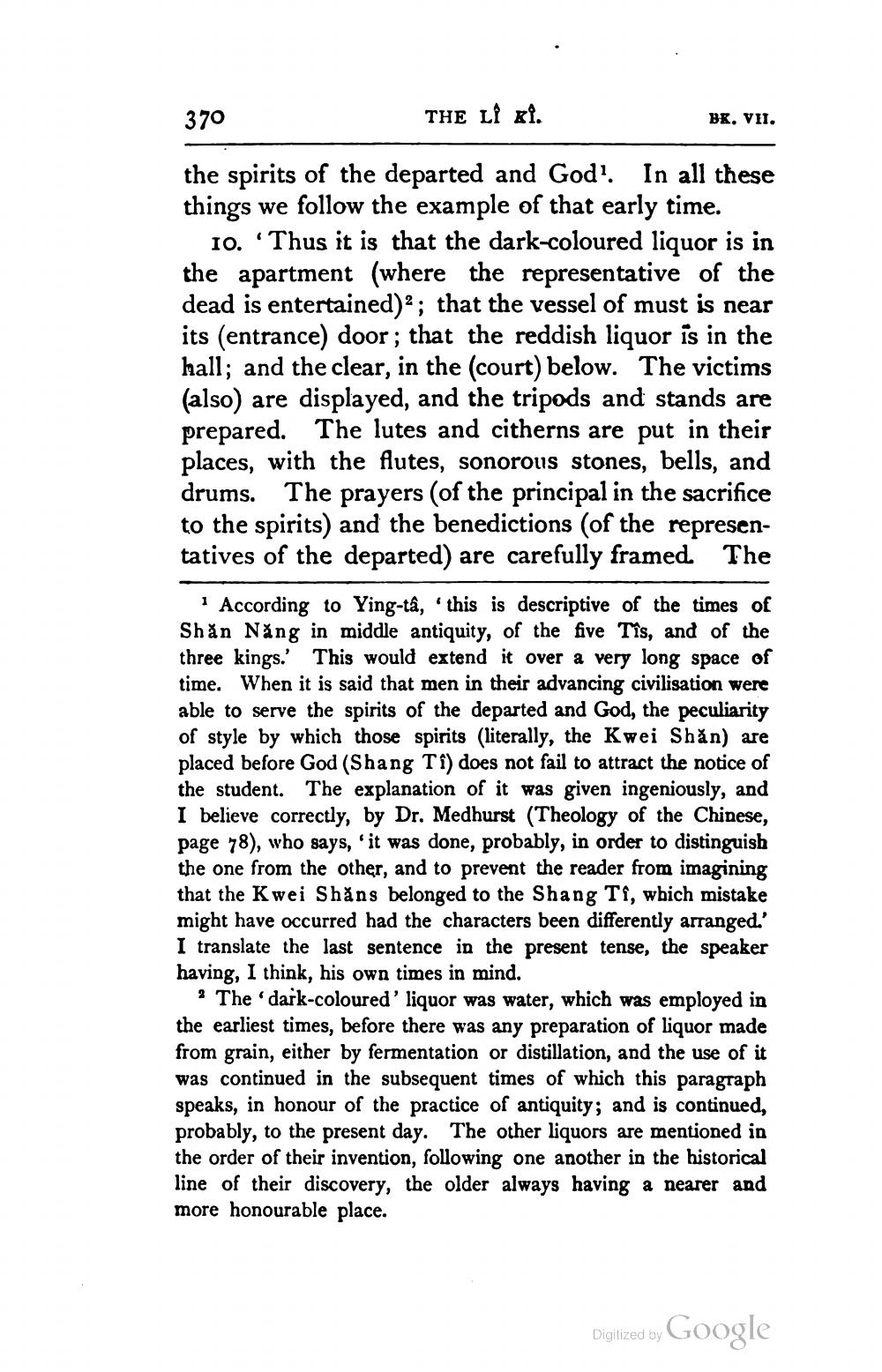________________
370
THE LI Kİ.
the spirits of the departed and God'. In all these things we follow the example of that early time.
10. Thus it is that the dark-coloured liquor is in the apartment (where the representative of the dead is entertained)2; that the vessel of must is near its (entrance) door; that the reddish liquor is in the hall; and the clear, in the (court) below. The victims (also) are displayed, and the tripods and stands are prepared. The lutes and citherns are put in their places, with the flutes, sonorous stones, bells, and drums. The prayers (of the principal in the sacrifice to the spirits) and the benedictions (of the representatives of the departed) are carefully framed. The
BK. VII.
1 According to Ying-tâ, this is descriptive of the times of Shăn Năng in middle antiquity, of the five Tîs, and of the three kings. This would extend it over a very long space of time. When it is said that men in their advancing civilisation were able to serve the spirits of the departed and God, the peculiarity of style by which those spirits (literally, the Kwei Shăn) are placed before God (Shang Tî) does not fail to attract the notice of the student. The explanation of it was given ingeniously, and I believe correctly, by Dr. Medhurst (Theology of the Chinese, page 78), who says, 'it was done, probably, in order to distinguish the one from the other, and to prevent the reader from imagining that the Kwei Shăns belonged to the Shang Tî, which mistake might have occurred had the characters been differently arranged.' I translate the last sentence in the present tense, the speaker having, I think, his own times in mind.
2 The 'dark-coloured' liquor was water, which was employed in the earliest times, before there was any preparation of liquor made from grain, either by fermentation or distillation, and the use of it was continued in the subsequent times of which this paragraph speaks, in honour of the practice of antiquity; and is continued, probably, to the present day. The other liquors are mentioned in the order of their invention, following one another in the historical line of their discovery, the older always having a nearer and more honourable place.
Digitized by
Google




